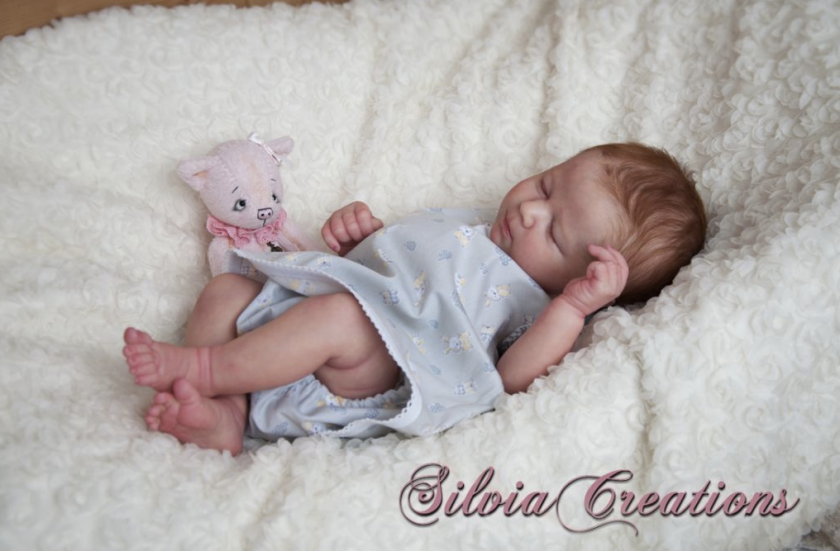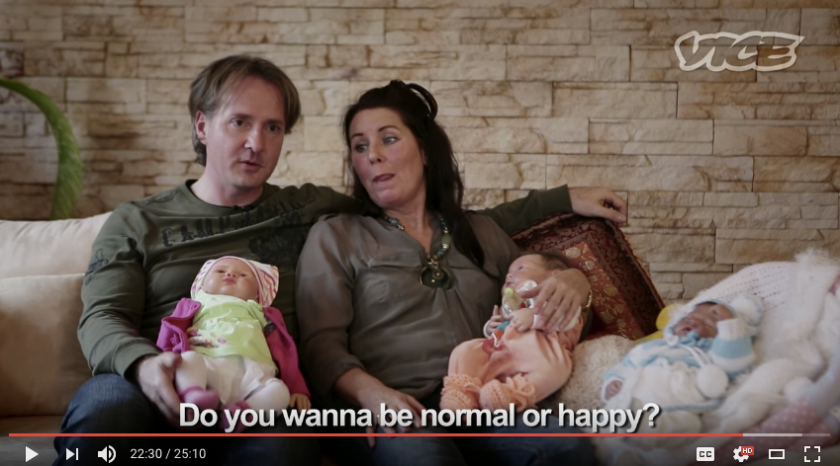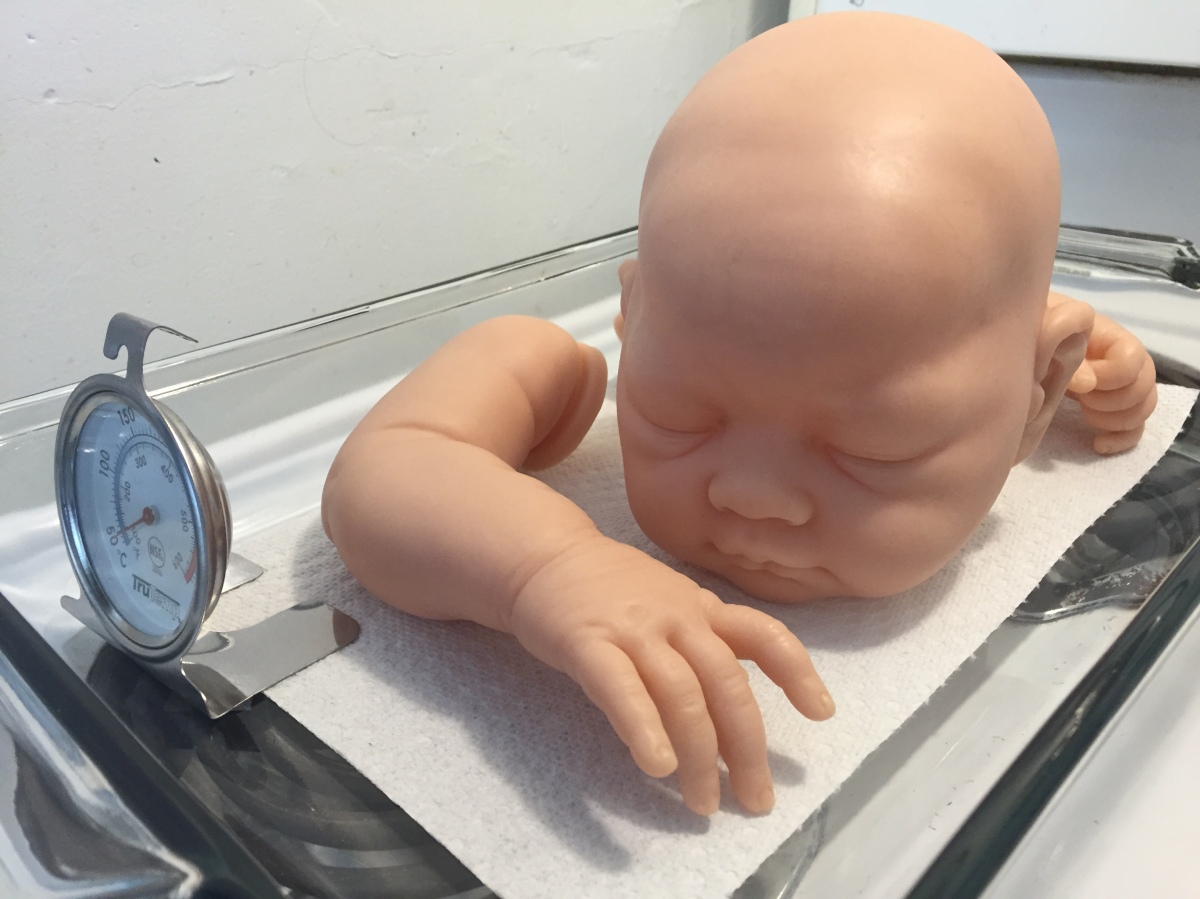Here are some Reborn Baby basics.
Many Reborn enthusiasts enjoy treating the dolls like babies and hundreds of reborn mothers regularly post videos on YouTube chronicling their lives as the proud mothers of reborn babies. Although criticized or insulted by psychologists, television talkshow hosts, and internet trolls, reborn mothers are supportive of one another and vocal in their defence of the hobby.
It is my contention that understanding reborn enthusiasm should deepen and expand cultural perceptions and potentialities, not apply reductive labels and limitations to a hobby rooted in creative practices of care and play.
Reborn dolls have risen in popularity since the late 1990s with an international community emerging through online forums and with eBay as a sales platform. Realistic dolls such as the Spanish-made Berenguer dolls have been common in toy stores since the 1980s, Reborn dolls however which were originally made from dolls such as Berenguers, have more realistic skin tones and hand rooted hair. By stripping away the factory painted features and carefully applying several layers of thinly applied paint, the dolls are considered “re-born” and that term has stuck even though most artists now work from blank vinyl available for purchase from a handful of companies such as Bountiful Baby, or a few artists cast silicone based on their own sculptural work. The name reborn can also refer to the mothers of the dolls who could be considered “reborn” as mothers upon adopting a reborn baby.

3D (photometric) scanning technology is used by the Bountiful Baby company to create Realborn® molds which scan a real baby and then cast it in vinyl.
Reborns regularly make headlines for being rescued from vehicles by police. Human trafficking authorities have also investigated people reportedly selling babies. Reborns are frequently presented as the fetishized playthings of adults, such as reality TV celebrity Courtney Stoddon’s recent foray in the spotlight after getting a reborn to deal with the devastation of a miscarriage. Although many of these articles are neutral or supportive in reporting on her Instagram posts with her reborn baby, comments on such articles are, not surprisingly, harsh. There is simultaneously increasing media attention on the therapeutic benefits of reborns for patients suffering from Alzheimer’s or dementia. Some reborn nurseries offer memorial reborns to commemorate a lost child.
A notable television program to examine reborn mothers was the 2008 Channel 4 documentary My Fake Baby which Louise Fitzgerald refers to as a “shock-doc” (25) in her analysis of the film. This was the documentary I first saw about reborns and I agree with Fitzgerald’s assessment that the program sensationalized the stories of the reborn mothers to the detriment of the hobby’s more positive associations. My Fake Baby has reached a wide audience online — the program was re-played shortly after it first aired due to its popularity, and the primary YouTube version which seems to have been uploaded in May of 2015 has over 3 milion views. The producers of My Fake Baby highlight the reborn mothers’ preferences for the cleanliness of reborns over real children, and a sense of loss or loneliness is emphasized over other motivations such as collecting reborns as a financial investment into artistic collectibles. A narrator guides the viewer through the women’s stories, dramatizing as needed. Fitzgerald contextualizes the portrayal and perceptions of the women in relation to play as follows: “while ‘play’ seems to have moved from a childhood prerogative towards an increasingly adult one, ‘play’ for adult women is still regarded as inappropriate and symptomatic of female pathology.”

Another popular reborn baby documentary available online, this one produced by Vice in 2013, takes a different approach to sharing the story of a German couple who have several reborns and even a full nursery in their home. There is no narrator although the filmmaker’s presence is sensed through scene constructions, and the couple address the camera directly as they discuss the role of reborns in their life and go through the “adoption” process with a new doll which was custom made by a local artist.
Negative perceptions of reborns are evident through the pre-emptively defensive behaviour of reborn mothers. Many YouTubers who post videos online about their dolls include a disclaimer stating that they are fully aware that the babies are not real and they are just having fun. Many videos have enabled the comments section and a majority of the feedback is positive, with people commenting on how cute or realistic the dolls are. It is also possible however thats the owners of the videos moderate their page and delete negative or insulting comments. Many reborn enthusiasts feel the need to defend their activities and this is no surprise given the number of articles that describe the dolls as “creepy” and the owners as “freaks.”
One American scholar, Michele White from Tulane University, has studied the online communities and marketplaces where reborns are sold, adopted, and discussed. The language used by sellers on eBay shifts seamlessly between referring to a reborn as simultaneously an artistic commodity as well as a new born baby. To quote one example, White’s chapter on reborns in the book Producing Women, a seller on eBay declared (in all caps) this “IS NOT A TOY” she was proud to introduce “THIS BEAUTIFUL BABY BOY” (74). This statement positions potential buyers as adults, and seeks to incite maternal desires. In another book chapter entitled “Babies That Touch You” White focused on this explicit production of affect on the part of reborn artists selling dolls on eBay. Artists’ listings cater to maternal desires and promise to fulfill a buyers desire for the “baby of their dreams” (68). The babies are always positioned as beautiful, fragile, in need of love and care, and even as injured or ill.
The Spanish company Babyclon makes animatronic babies which sell for over 4,000 euros. Although less popular than the conventional babies, animal reborns are a niche within the realm of reborns that frequently pop up in searches through reborns on eBay as well as on the sites of doll supply wholesalers. I’ve found vampire babies, little zombies, avatars, primates, piglets, pups, and even a baby chewie.
More soon, please feel free to leave feedback or questions in the comments.
REFERENCES
Barcroft TV. “My Fake Baby.” YouTube. 7 May 2015.
https://www.youtube.com/watch?v=hTnr2CmLbG4
Fitzgerald, Louise.(2011). “‘Let’s play mummy’: Simulacrum babies and reborn mothers” European Journal of Cultural Studies. Vol 14(1) p. 25–39
Vice. “Reborn Babies (Documentary).” YouTube. 13 Feb 2014.
https://www.youtube.com/watch?v=EkyUZJDGvMY
White, Michele. (2015). Producing Women: The Internet, Traditional Femininity, Queerness, and Creativity. Routledge, New York.
White, Michele. (2012). “Babies who touch you: Reborn dolls, artists, and the emotive display of bodies on eBay”. Political Emotions: New Agendas in Communication. Routledge, New York.
